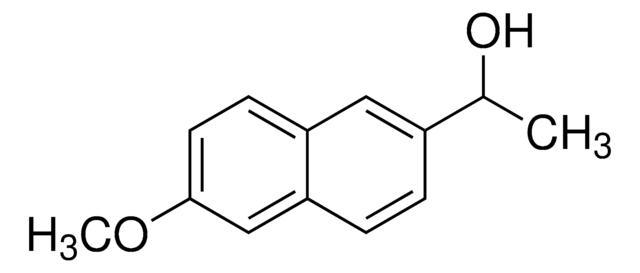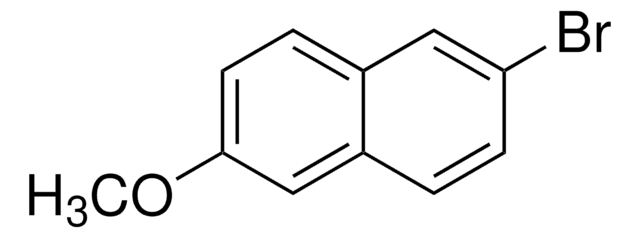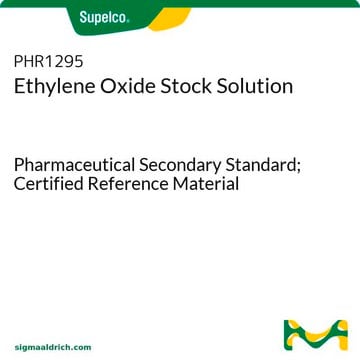82320
(±)-Propylene oxide
puriss. p.a., ≥99.5% (GC)
Sinonimo/i:
(±)-Methyloxirane, 1,2-Epoxypropane
Scegli un formato
Scegli un formato
About This Item
Prodotti consigliati
Densità del vapore
2 (vs air)
Tensione di vapore
29.43 psi ( 55 °C)
8.59 psi ( 20 °C)
Grado
puriss. p.a.
Saggio
≥99.5% (GC)
Stato
liquid
Temp. autoaccensione
1378 °F
Limite di esplosione
37 %
Impurezze
≤0.1% water
Residuo dopo evaporazione
≤0.005%
Indice di rifrazione
n20/D 1.366 (lit.)
n20/D 1.366
P. ebollizione
34 °C (lit.)
Punto di fusione
−112 °C (lit.)
Densità
0.83 g/mL at 25 °C (lit.)
Cationi in tracce
Al: ≤0.5 mg/kg
Ba: ≤0.1 mg/kg
Bi: ≤0.1 mg/kg
Ca: ≤0.5 mg/kg
Cd: ≤0.05 mg/kg
Co: ≤0.02 mg/kg
Cr: ≤0.02 mg/kg
Cu: ≤0.02 mg/kg
Fe: ≤0.1 mg/kg
K: ≤0.5 mg/kg
Li: ≤0.1 mg/kg
Mg: ≤0.1 mg/kg
Mn: ≤0.02 mg/kg
Mo: ≤0.1 mg/kg
Na: ≤0.5 mg/kg
Ni: ≤0.02 mg/kg
Pb: ≤0.1 mg/kg
Sr: ≤0.1 mg/kg
Zn: ≤0.1 mg/kg
Condizioni di spedizione
wet ice
Temperatura di conservazione
2-8°C
Stringa SMILE
CC1CO1
InChI
1S/C3H6O/c1-3-2-4-3/h3H,2H2,1H3
GOOHAUXETOMSMM-UHFFFAOYSA-N
Cerchi prodotti simili? Visita Guida al confronto tra prodotti
Categorie correlate
Descrizione generale
Applicazioni
- Poly(3-hydroxybutyrate), a biodegradable and biocompatible polyester, by carbonylative polymerization.
- Poly (propylene-ram-ε-caprolactone carbonate) (PPCL) and poly (propylene carbonate) (PPC), which are applicable as drug carriers.
Applicazioni
Avvertenze
Danger
Indicazioni di pericolo
Consigli di prudenza
Classi di pericolo
Acute Tox. 3 Dermal - Acute Tox. 3 Inhalation - Acute Tox. 4 Oral - Carc. 1B - Eye Irrit. 2 - Flam. Liq. 1 - Muta. 1B - STOT SE 3
Organi bersaglio
Respiratory system
Codice della classe di stoccaggio
3 - Flammable liquids
Classe di pericolosità dell'acqua (WGK)
WGK 3
Punto d’infiammabilità (°F)
-36.4 °F - Equilibrium method
Punto d’infiammabilità (°C)
-38 °C - Equilibrium method
Dispositivi di protezione individuale
Faceshields, Gloves, Goggles
Scegli una delle versioni più recenti:
Possiedi già questo prodotto?
I documenti relativi ai prodotti acquistati recentemente sono disponibili nell’Archivio dei documenti.
I clienti hanno visto anche
Active Filters
Il team dei nostri ricercatori vanta grande esperienza in tutte le aree della ricerca quali Life Science, scienza dei materiali, sintesi chimica, cromatografia, discipline analitiche, ecc..
Contatta l'Assistenza Tecnica.











